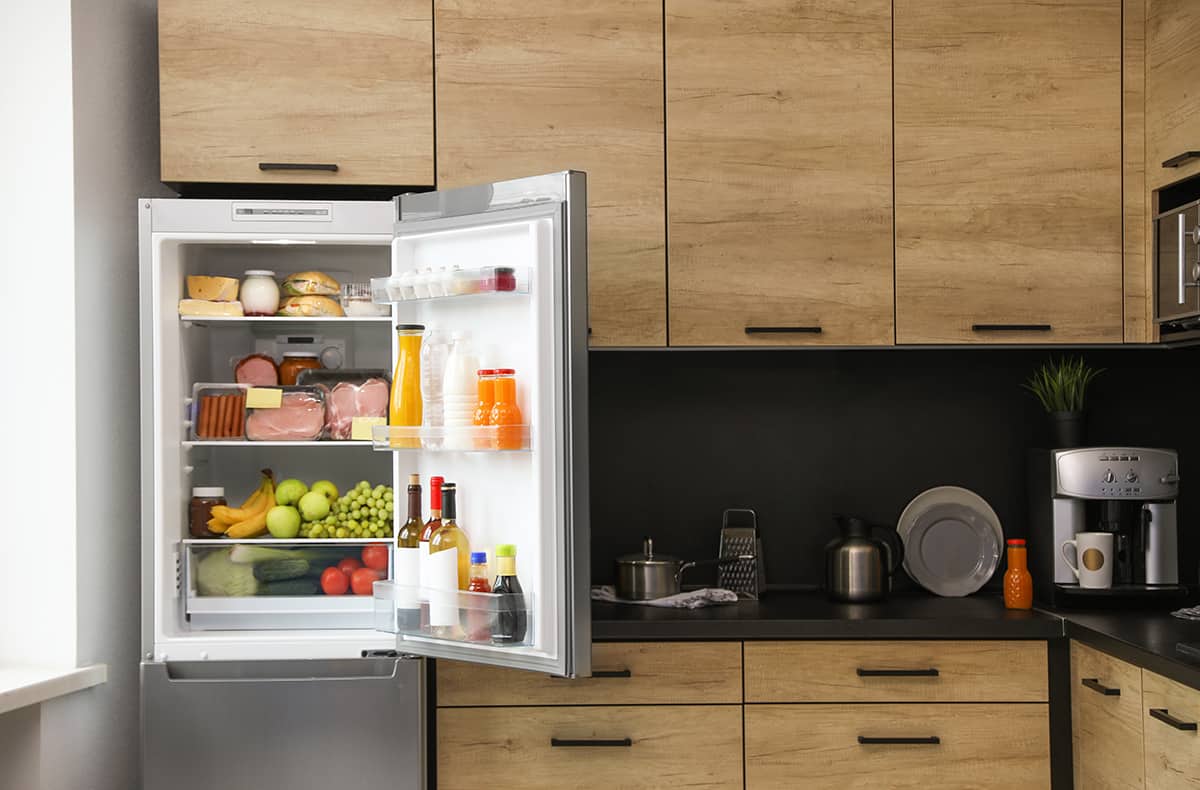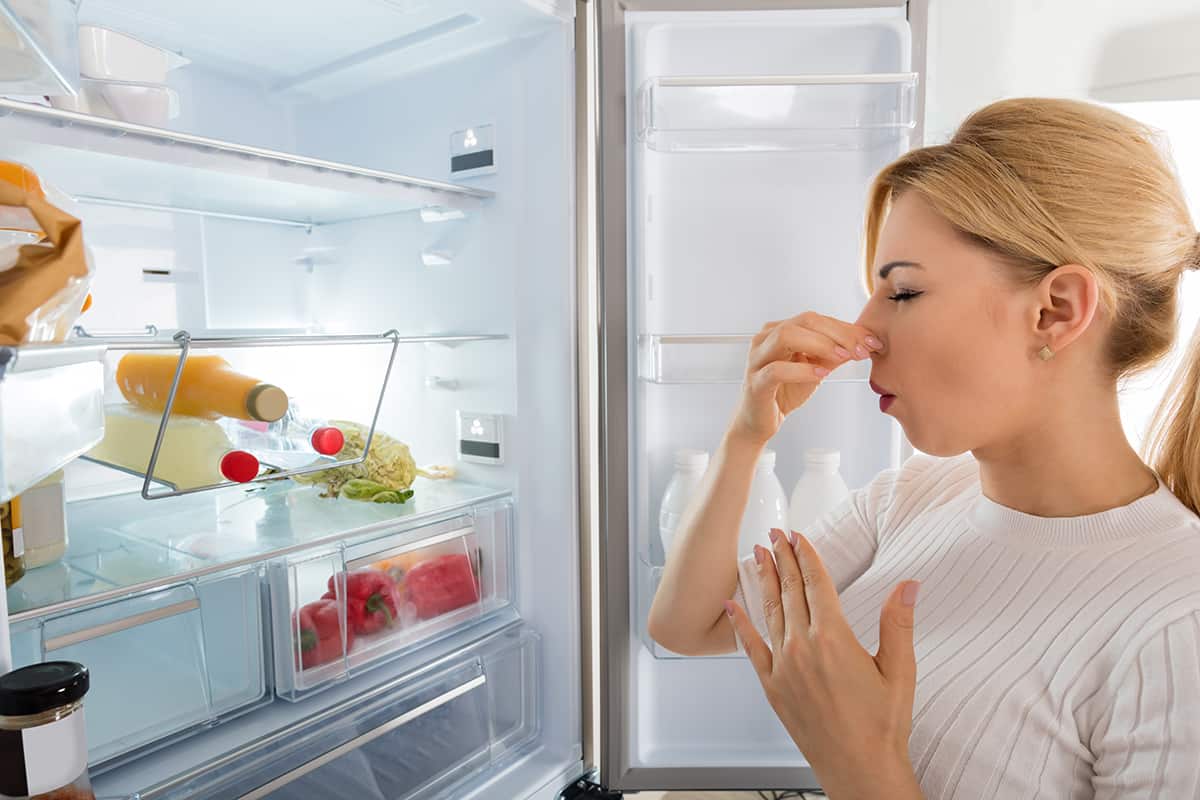Are you sick of your refrigerated food being too cold or too warm? Never fear, because the ultimate fridge temperature has finally been discovered! With the right temperature, your leftover pizza will be perfectly chilled and your ice cream will be just soft enough to scoop.
The optimal fridge temperature is between 32 and 40°F (0 and 4°C), and the freezer should be set to lower than 0°F (-18°C). These ranges are recommended by the United States Department of Agriculture (USDA) and Food Safety and Inspection Service (FSIS) as a way to keep food fresh and prevent the growth of bacteria that can cause foodborne illness.
In this guide, I’ll go into more detail about the optimal temperature ranges for refrigerators, as well as provide a couple of pointers on how to keep your food fresh in the fridge or freezer for longer.
What Is the Correct Temperature for a Fridge?

The United States Food and Drug Administration (FDA) and the Food Safety and Inspection Service (FSIS) recommend maintaining a fridge temperature of 40 degrees Fahrenheit (4 degrees Celsius) or below to prevent the growth of harmful bacteria that can cause foodborne illness. This temperature range is considered the ”danger zone” because bacteria can grow rapidly between 40 and 140 degrees Fahrenheit (4 and 60 degrees Celsius).
You should also pay attention to how different food types have different storage and temperature requirements Examples of foods that benefit from temperature regulation include dairy and eggs, which keep better at cooler temperatures, and meats and seafood, which fare better at slightly warmer temperatures when defrosting. Raw meat and poultry, as well as other perishables, should be kept on the refrigerator’s lower shelves if you’re going to use them in a couple of days, or you can leave them in the freezer for long-term storage.
Making sure the fridge stays within the safe temperature range requires by checking with a thermometer. If the temperature in your refrigerator is too high, try lowering the thermostat. If your refrigerator is still too warm after following these steps, it may be time to call in an expert.
Fridge Temperature Chart
| Food Type | Recommended Fridge Temperature (°F) | Recommended Fridge Temperature (°C) |
| Leftovers | 32 to 40 | 0 to 4 |
| Condiments (ketchup, mustard, mayonnaise) | <= 40 | <=4 |
| Raw shellfish | 32 to 34 | 0 to 1 |
| Cooked shellfish | 32 to 40 | 0 to 4 |
| Raw finfish | 32 to 34 | 0 to 1 |
| Cooked finfish | 32 to 40 | 0 to 4 |
| Smoked fish | 32 to 40 | 0 to 4 |
| Leafy greens (lettuce, spinach, kale) | 32 to 34 | 0 to 1 |
| Cruciferous vegetables (broccoli, cauliflower, cabbage) | 32 to 34 | 0 to 1 |
| Root vegetables (carrots, potatoes, onions) | 32 to 40 | 0 to 4 |
| Squash and zucchini | 32 to 40 | 0 to 4 |
| Bell peppers | 32 to 40 | 0 to 4 |
| Tomatoes | 32 to 40 | 0 to 4 |
| Berries (strawberries, raspberries, blackberries) | 32 to 34 | 0 to 1 |
| Grapes | 30 to 32 | -1 to 0 |
| Melons (watermelons, cantaloupe, honeydew) | 32 to 40 | 0 to 4 |
| Apples | 30 to 32 | -1 to 0 |
| Pears | 30 to 32 | -1 to 0 |
| Citrus (oranges, lemons, limes) | 32 to 34 | 0 to 1 |
| Raw beef, pork, lamb | 32 to 34 | 0 to 1 |
| Cooked beef, pork, lamb | 32 to 40 | 0 to 4 |
| Raw poultry (chicken, turkey, duck) | 32 to 32 | 0 to 1 |
| Cooked poultry (chicken, turkey, duck) | 32 to 40 | 0 to 4 |
| Deli meats | 32 to 40 | 0 to 4 |
| Sausage and bacon | 32 to 40 | 0 to 4 |
| Eggs | 33 to 35 | 0.5 to 1.5 |
| Milk | 32 to 40 | 0 to 4 |
| Hard cheese (cheddar, Swiss, parmesan) | 32 to 34 | 0 to 1 |
| Soft cheese (brie, camembert, feta) | 34 to 40 | 1 to 4 |
| Butter | 32 to 40 | 0 to 4 |
| Yoghurt | 32 to 40 | 0 to 4 |
| Cream cheese | 32 to 40 | 0 to 4 |
| Pasteurized buttermilk | 32 to 40 | 0 to 4 |
| Raw buttermilk | 34 to 40 | 1 to 4 |
| Soy milk | 32 to 40 | 0 to 4 |
| Almond milk | 32 to 40 | 0 to 4 |
| Oat milk | 32 to 40 | 0 to 4 |
| Coconut milk | 32 to 40 | 0 to 4 |
| Rice milk | 32 to 40 | 0 to 4 |
| Leftovers | 32 to 40 | 0 to 4 |
As you can see, the main suggested temperature ranges for your fridge are 32 to 40°F, 32 to 34°F, and 30 to 32°F. If you want to store different food items with different temp ranges in your fridge, you should follow the lower temperature range.
Keep a thermometer in your fridge and freezer and check it regularly to make sure the temperature stays out of the danger zone and doesn’t spoil before it’s time to eat it. If you follow these rules, you won’t have to worry as much about wasting money on spoiled food.
When it comes to your freezer, it should always be set to at least 0°F (-18°C) or lower. However, please note that the freezer temperature can affect the texture of your food. The lower the temperature setting is, the greater the risk of causing freezer burn.
Tips to Keep Food Fresh in the Fridge for Longer
Proper food storage in the refrigerator can help keep perishable items fresh for longer. How to make your food last longer in the fridge:
- Store perishable items, such as raw meat and poultry, on the lower shelves of the fridge where the temperature is the coldest. This helps prevent the risk of cross-contamination with other foods.
- Keep perishables fresh by storing them in a sealed container or a plastic bag. This helps prevent spoilage due to air exposure.
- Don’t overcrowd your fridge. Maintaining food’s quality and stopping the spread of bacteria depend on adequate ventilation.
- Separate raw from cooked foods. Keep raw foods away from cooked ones by placing them on the bottom shelves of the fridge.
- Refrigerator organization should be done using the “first-in, first-out” method. Put the newer items in the back of the cupboard so that the older ones get used up first.
- Toss out any perishables that are past their use-by dates. If you do this, you know that the food you’re eating is safe and won’t make you sick.
- Wash your hands. The bacteria on your hands will spread to whatever you touch, including food.
- If you want to keep tabs on the temperature inside your fridge, you should think about getting a thermometer. Your fridge thermostat controls the air temperature but may not give a temperature reading, which is why you will need to get a thermometer separately.
You can keep your food fresh and safe to eat for a longer period of time if you follow these guidelines. To keep perishables like food fresh and free from contamination, it’s crucial to remember that various foods have their own unique storage needs.
Tips to Keep Food Fresh in the Freezer for Longer

If you’d like to extend the shelf life of your food for even longer, you should stick them in your freezer. In addition to the tips from the previous section, here are a few freezer-exclusive tips you can follow to keep food fresh for longer.
- Be sure to date and label your frozen foods. Having a record of what you have and how long it has been in storage is useful for figuring out which foods to cook sooner rather than later.
- Prepare meals in individual servings and freeze them. You can defrost and eat only what you need, helping you reduce waste.
- Don’t refreeze thawed food. It’s best to use thawed food within a few days, but once it’s thawed, refreezing it can significantly impact its texture and flavor.
What Foods Can You Leave Outside of the Fridge?
Some foods can be safely kept at room temperature for extended periods of time without refrigeration. Such food items are as follows:
- Apples, bananas, and pears, among many others, can be stored until ripe at room temperature. They have a longer shelf life if stored in the fridge after they are ripe.
- Potatoes, onions, and tomatoes are just some examples of vegetables that keep well at room temperature. When storing vegetables, keep them in dark and dry parts of your pantry.
- Grain products like rice, pasta, and oats benefit from being stored in a dry, cool environment at room temperature.
- Almonds and cashews keep well at room temperature as long as they are kept in a dry, cool place.
- Herbs and spices are best kept in a cool, dry place, but you can also leave them on your kitchen countertop for easier access.
How Long Does Food Last in the Fridge?
The shelf life of refrigerated food varies depending on the type of food. Here’s a table that describes the shelf life of common items you might have in your fridge right now.
| Food Item | Shelf Life in Fridge (Days) |
| Milk | 5 to 7 |
| Eggs | 3 to 5 |
| Yogurt | 7 to 10 |
| Fresh fruit | 3 to 5 |
| Deli meats | 3 to 5 |
| Cooked poultry | 3 to 5 |
| Raw meat | 3 to 4 |
| Cooked meat | 3 to 4 |
| Unwrapped Cheese | 3 to 7 |






